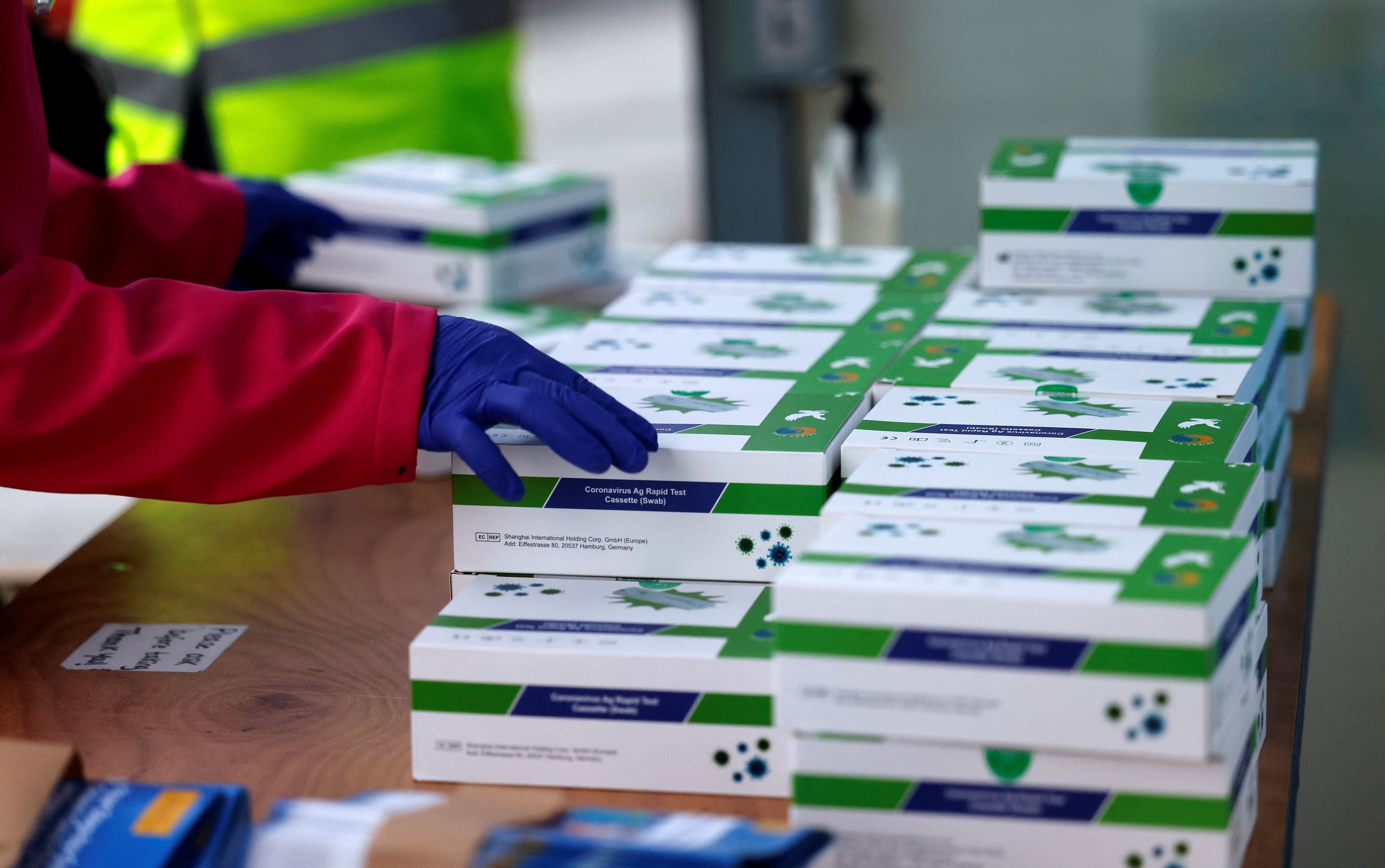People who “cheat” lateral flow tests will put others at risk, says expert
Changes to the self-isolation period in Scotland were announced on Wednesday.

Your support helps us to tell the story
From reproductive rights to climate change to Big Tech, The Independent is on the ground when the story is developing. Whether it's investigating the financials of Elon Musk's pro-Trump PAC or producing our latest documentary, 'The A Word', which shines a light on the American women fighting for reproductive rights, we know how important it is to parse out the facts from the messaging.
At such a critical moment in US history, we need reporters on the ground. Your donation allows us to keep sending journalists to speak to both sides of the story.
The Independent is trusted by Americans across the entire political spectrum. And unlike many other quality news outlets, we choose not to lock Americans out of our reporting and analysis with paywalls. We believe quality journalism should be available to everyone, paid for by those who can afford it.
Your support makes all the difference.It is important that people are “scrupulously honest” about lateral flow tests to avoid putting others at risk following changes to self-isolation rules, an expert has said.
Under the new rules, which came into force on Thursday, those who test positive for Covid-19 can end their isolation after seven days instead of 10, provided they do not have a fever and test negative on lateral flow devices on day six and again at least 24 hours later.
Professor James Chalmers, a respiratory research expert at the University of Dundee’s School of Medicine warned that anybody who “cheats these rules” by leaving quarantine without testing negative could put others at risk as there is a chance they may still be infectious.
He said that modelling from the UK Health Security Agency shows the risk of being infectious at 10 days is the same as at seven days if you take two tests, and described the changes as “absolutely the right thing to do” at a time when there is a lot of disruption.
However he said it is important that people are honest in reporting their test results.
We can expect this month to see a peak in the number of cases, and the number of hospitalisations to peak around the same time as they did last year, which is towards the end of January
Prof Chalmers, who is also a consultant respiratory physician, told BBC Good Morning Scotland: “This isn’t that the self-isolation period has been cut from 10 to seven days, it’s still 10 days unless you are able to post two negative lateral flow tests, and it’s very important that people are scrupulously honest with those negative lateral flow tests.
“If you don’t take a lateral flow test, if you just exit self-isolation at day seven, the modelling suggests a 15% risk that you are still infections, so anybody who cheats these rules is putting others at risk because there is still a risk if you don’t have those negative lateral flow tests.”
He added: “We know that the lateral flows are extremely specific – that means if you’ve got a positive lateral flow, particularly at the moment when there’s a lot of Covid about, you’ve got Covid; the chance of a false positive is something like three in 10,000 so it’s not going to be a false positive.”
Under the new rules, announced by First Minister Nicola Sturgeon on Wednesday, household contacts of confirmed cases will no longer have to self-isolate for 10 days, instead taking lateral flow tests for seven days and isolating if any of these are positive.
This second change applies only to those under the age of 18 years and four months and those who are fully vaccinated, including having had a booster jag, with others still having to isolate for 10 days and take a PCR test
Ms Sturgeon also announced a further change to the rules so that those who test positive on a lateral flow device no longer need to take a PCR test to confirm the result, if they have no symptoms.
Instead they must immediately isolate and report the result of their lateral flow test to allow Test and Protect to begin contact tracing.
Prof Chalmers said that, despite the high number of cases in Scotland with 16,103 new coronavirus infections announced on Wednesday, the peak is not expected until later this month.
He said: “We can expect this month to see a peak in the number of cases, and the number of hospitalisations to peak around the same time as they did last year, which is towards the end of January.
“So, although it feels like there is a huge number of cases in Scotland at the moment and hospitalisations have doubled in the course of the week, we’re still at a relatively early stage of this and we’ve got probably a week to 10 days of case growth and then a couple of weeks of increases in hospitalisations still to get through.”